My. Choice.
The hijab is often seen as a sign of oppression. In this photo essay commemorating the International Women's Day, four women speak a different truth
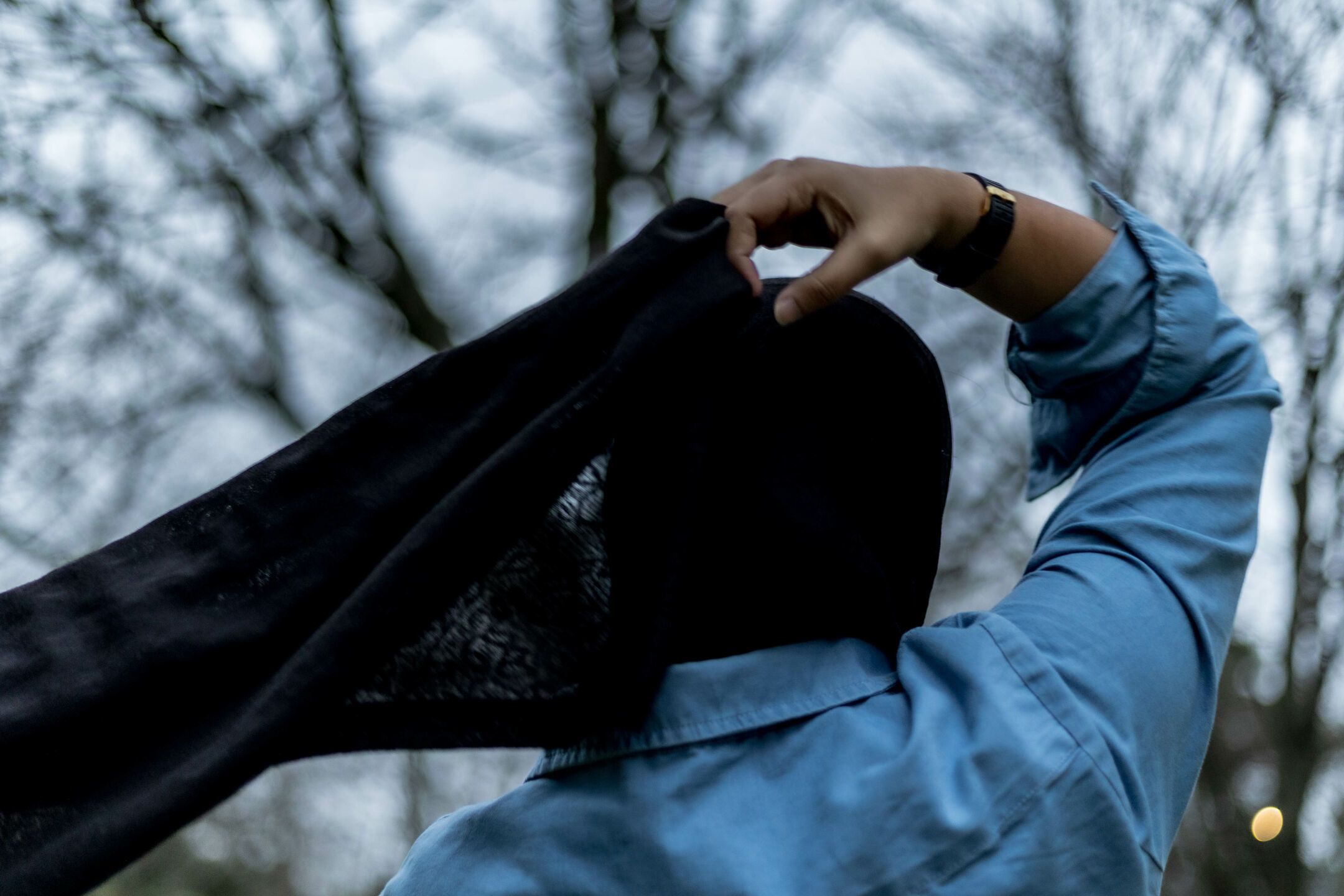
Hijab, the headscarf worn by Muslim women, has increasingly become controversial, highly politicised and often portrayed as a veil of disempowerment.
Though head coverings are also associated with Jewish, Christian and Hindu communities, it has never attracted the level of controversy that has surrounded its use by Islamic women. Hijabophobia — or hostility towards hijab — is a modern-world reality. Founded on misogynist and sexists beliefs, it exposes Muslim women to a range of issues — from racism and discrimination, to sympathy, even pity at times. But for many Muslim women, hijab is not oppression. Far from it. It is liberation, a fabric of freedom. It is their identity, an expression of choice.
Four women, from various walks of life, share their views on what the hijab means to them on this International Women's Day.
Cinta Filiani Makwana is 22. She was born in Indonesia, raised in London. The hijab was not part of her childhood, she remembers. It came to her when she became an adult and gained a better understanding and appreciation of Islam.
For Cinta, wearing the hijab is a personal choice. She does it for herself. Hijab makes her feel more secure about her body, she said, as there is a constant pressure for women to fit into society’s unrealistic beauty standards, to look a certain way — beauty standards which affect the mental wellbeing of many young women. Cinta said she sees the scarf on her head as empowerment, dignity... the freedom to follow her faith.
"I have never been a hijabi, but I have started to use it more. I am learning to wear my hijab with modesty and etiquette."
"I chose to wear the hijab at a fairly late age, but it means a great deal to me. I still overthink how it will look to other people and the way it will represent me. Eventually, I am learning not to be concerned about others. I really like wearing a hijab and it makes me feel liberated.
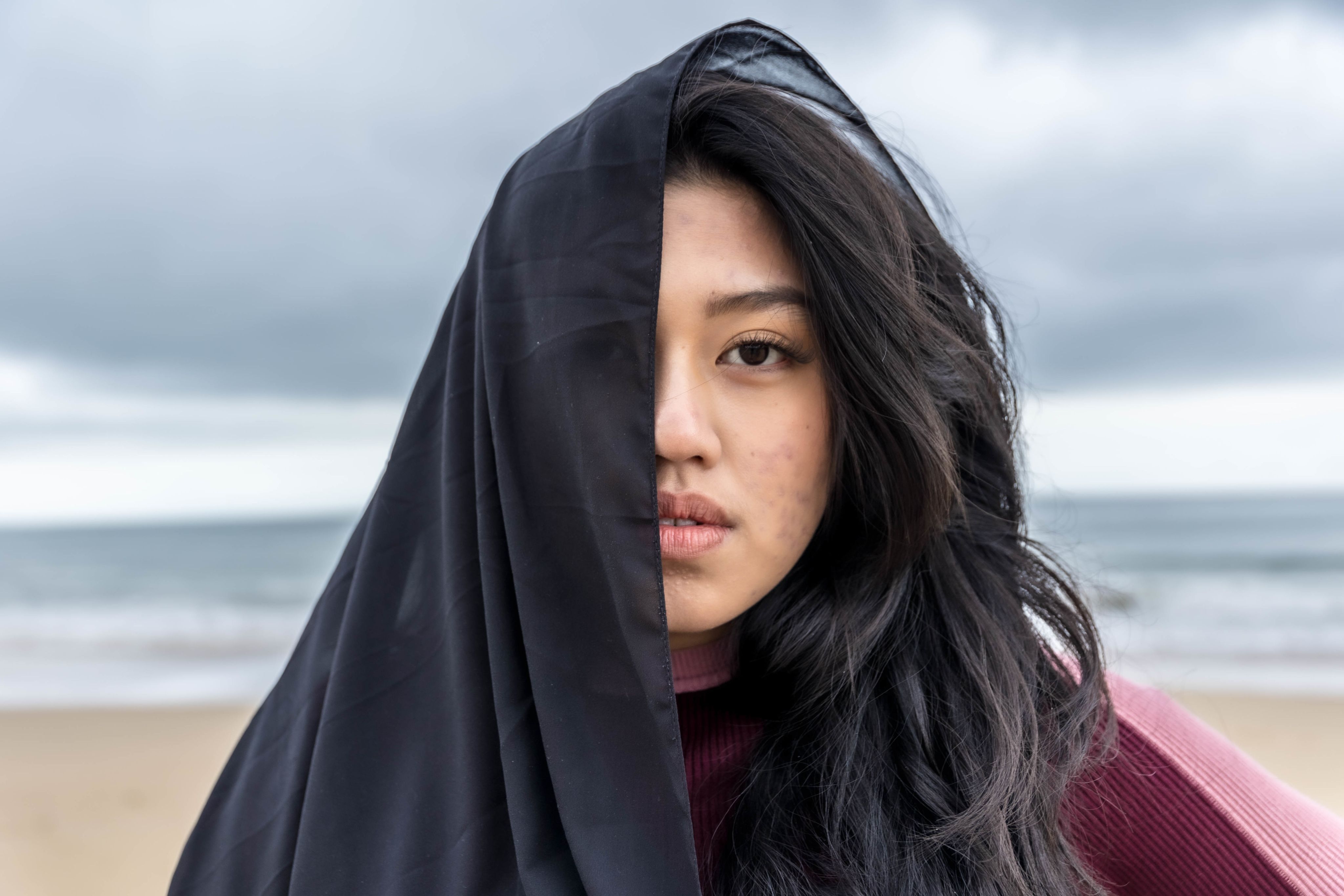
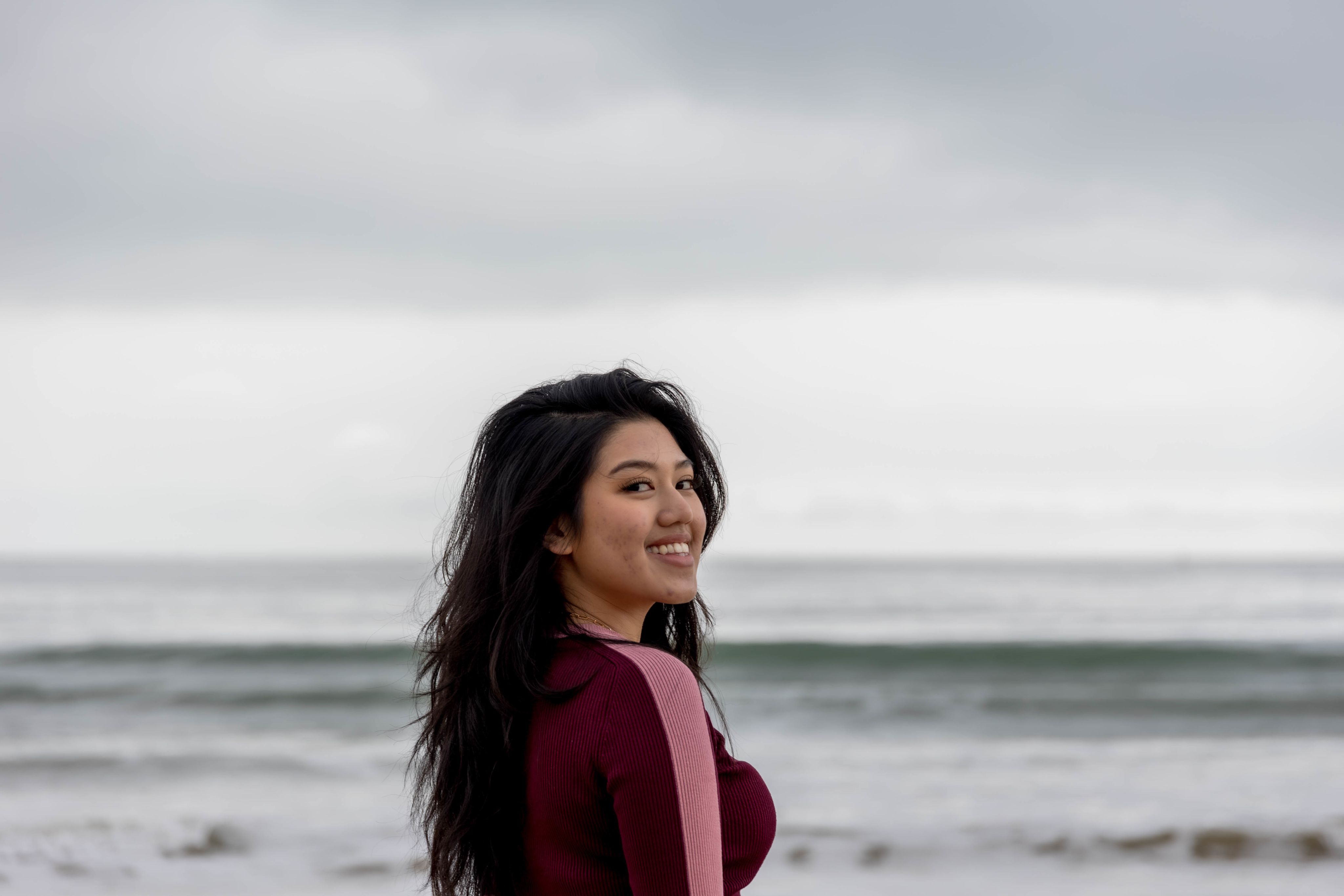
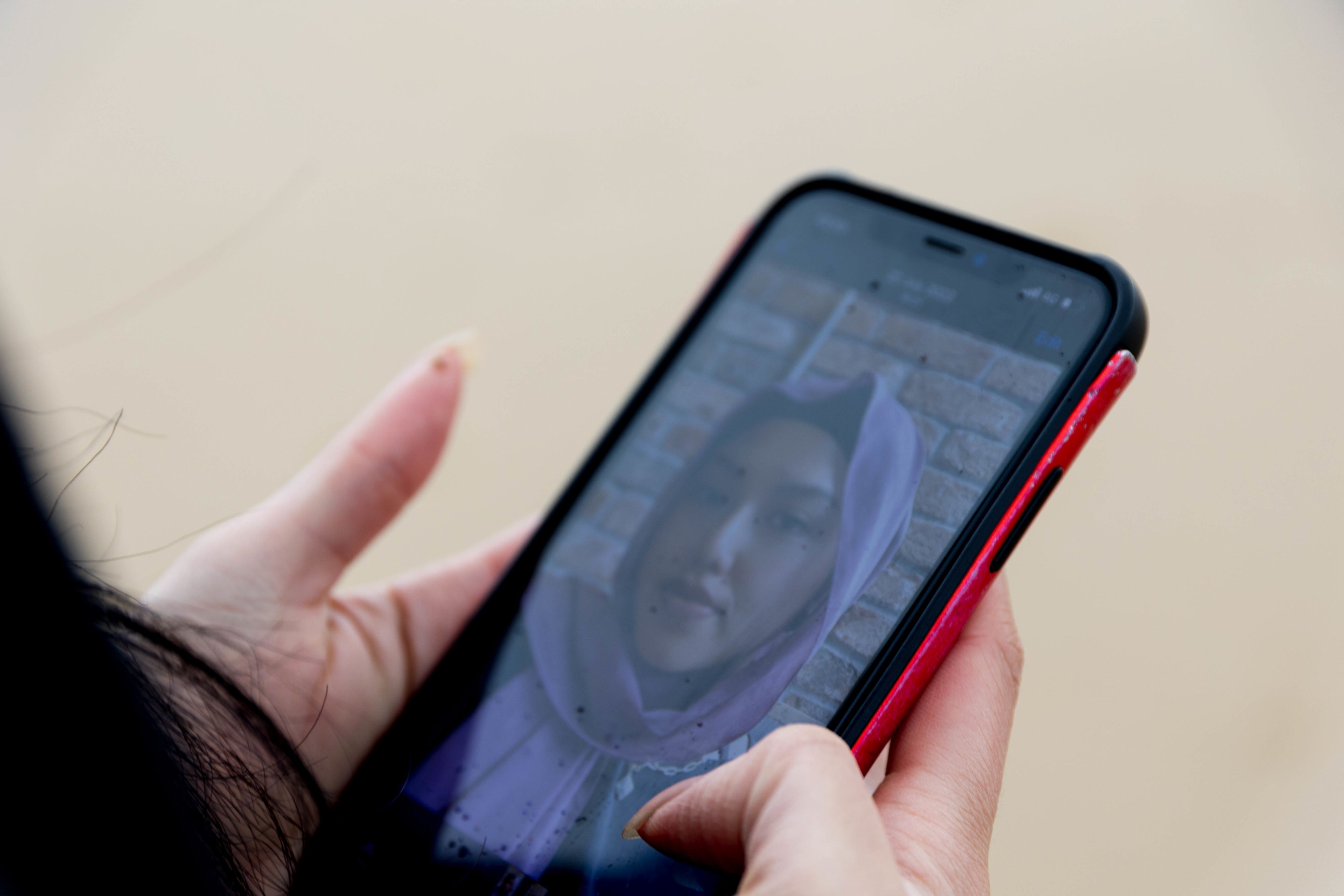
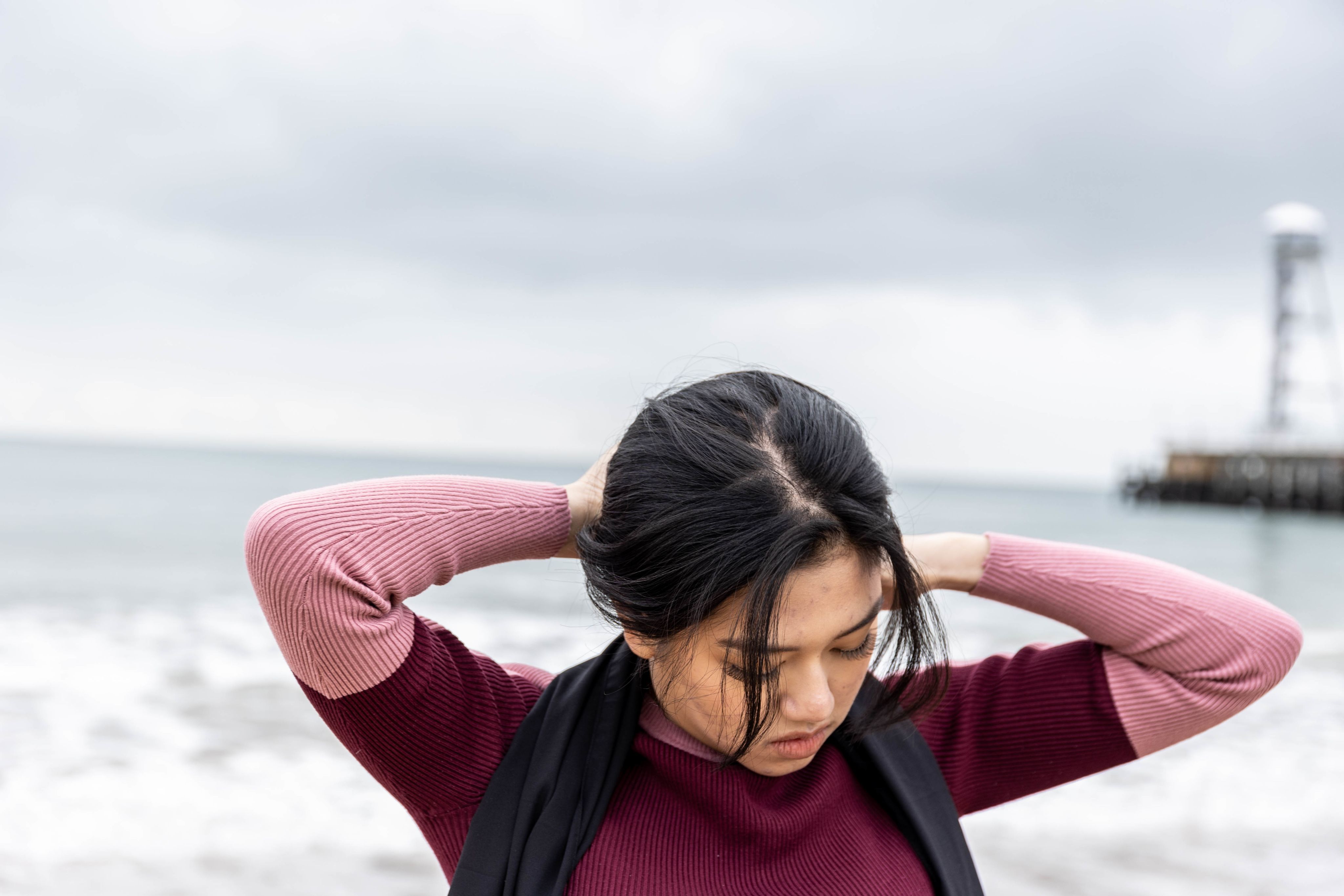
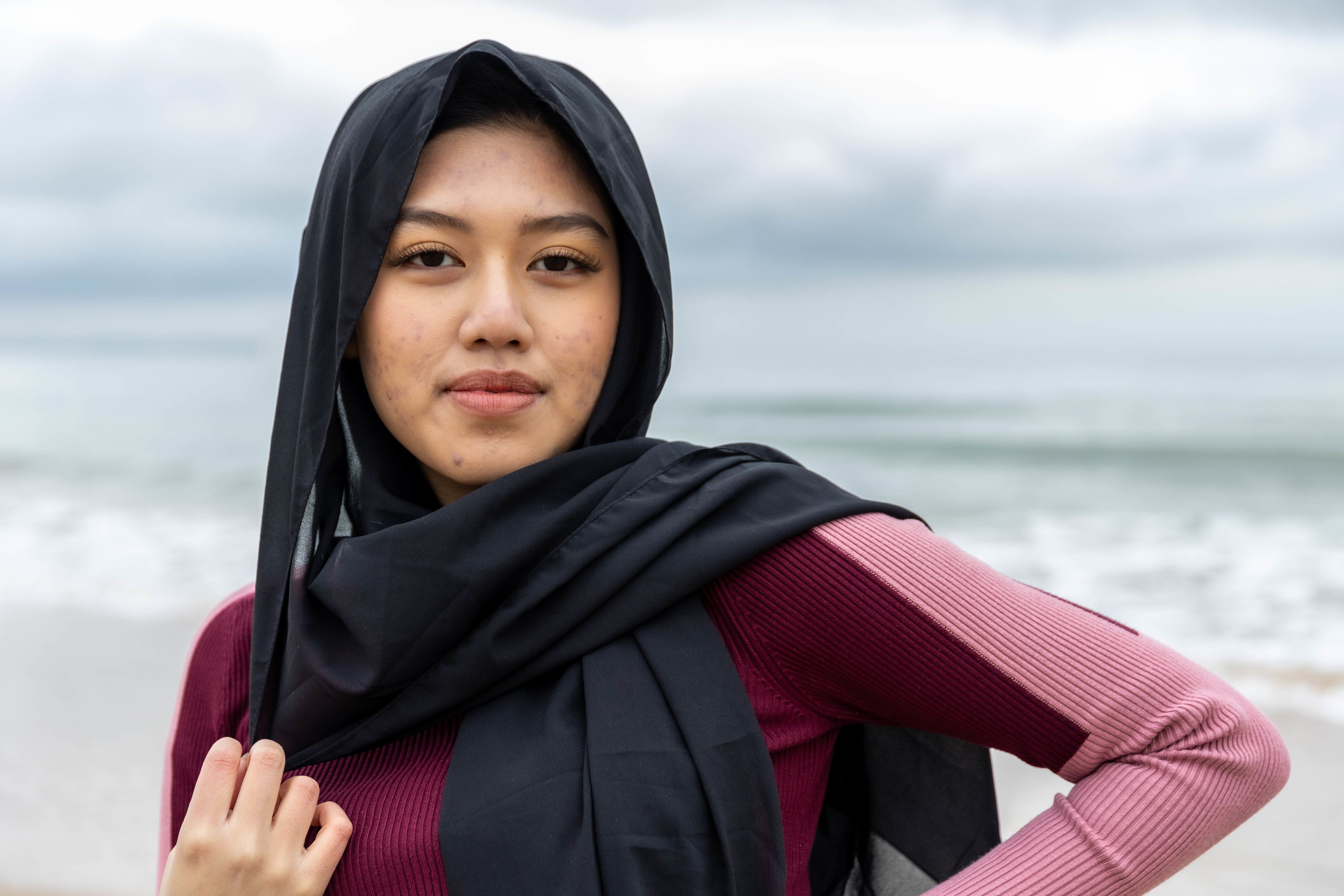
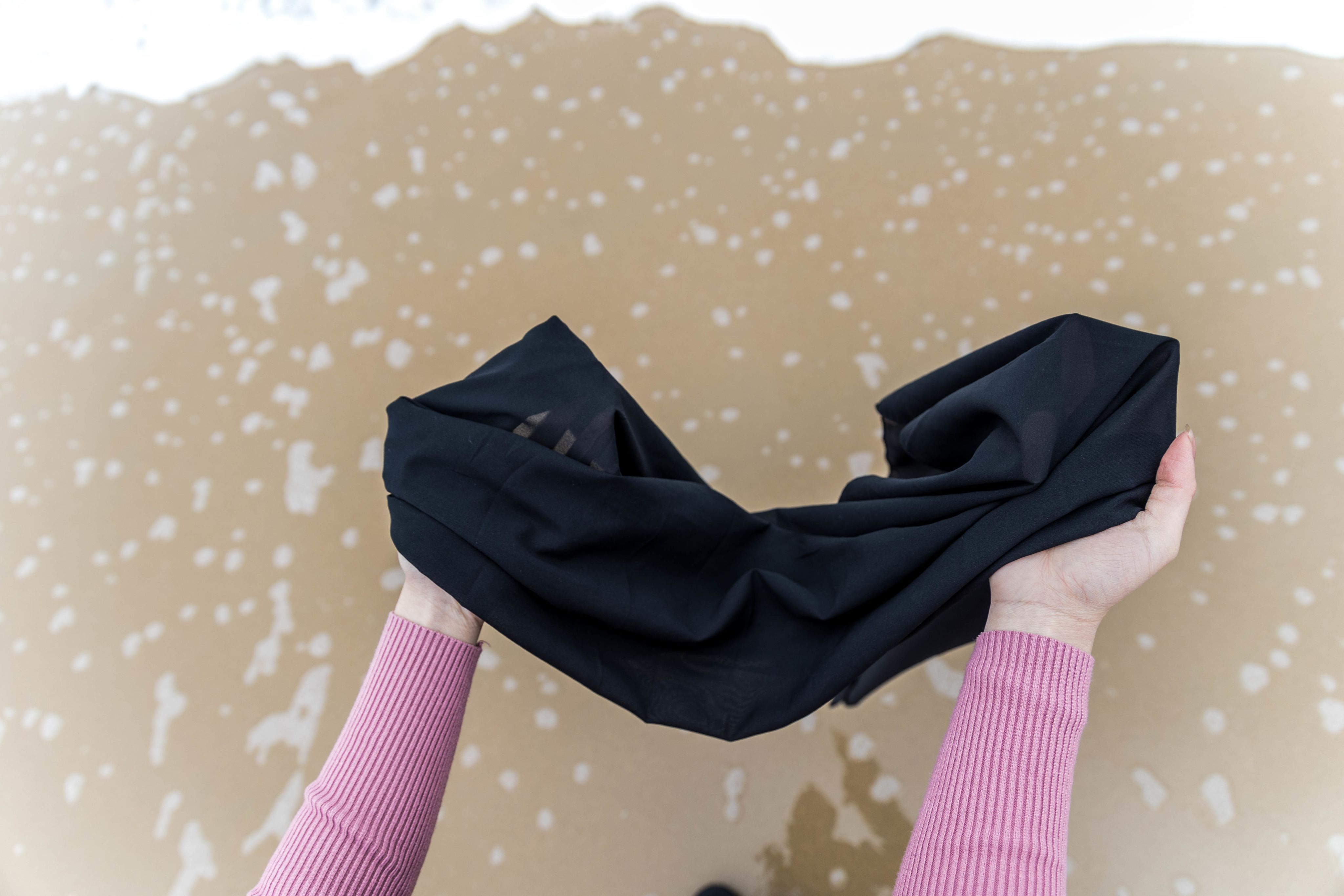
"Hijab is more than a piece of clothing. It contains other attributes. Modesty in the way you dress and present yourself, the way you live your life, the mannerisms you hold, the etiquette you follow, the mentality you have, and the way you treat others are all included under my definition of hijab."
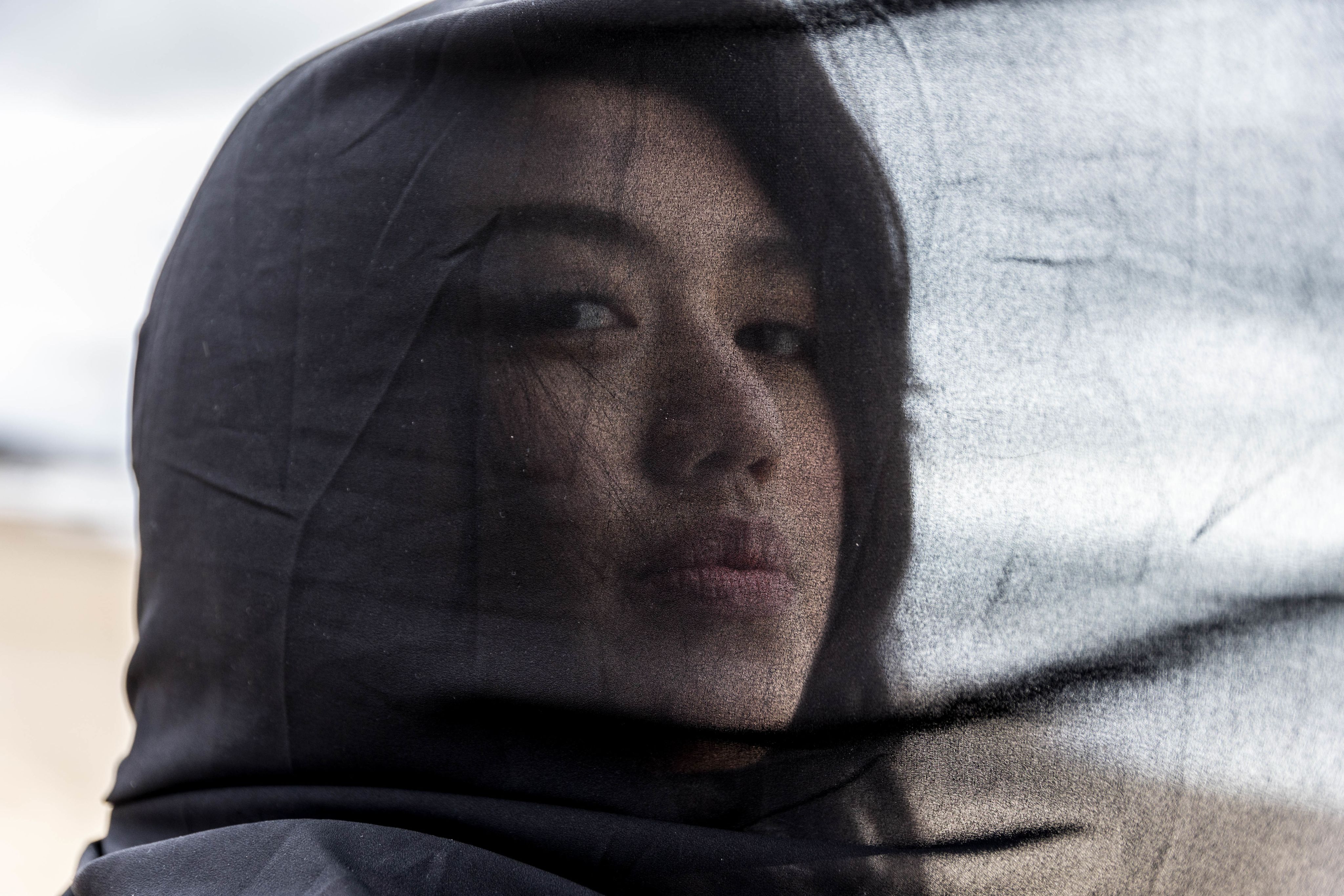
'I want to be the best example for my daughters. I have shown them what Islam is'
Sister Tama Merdaci
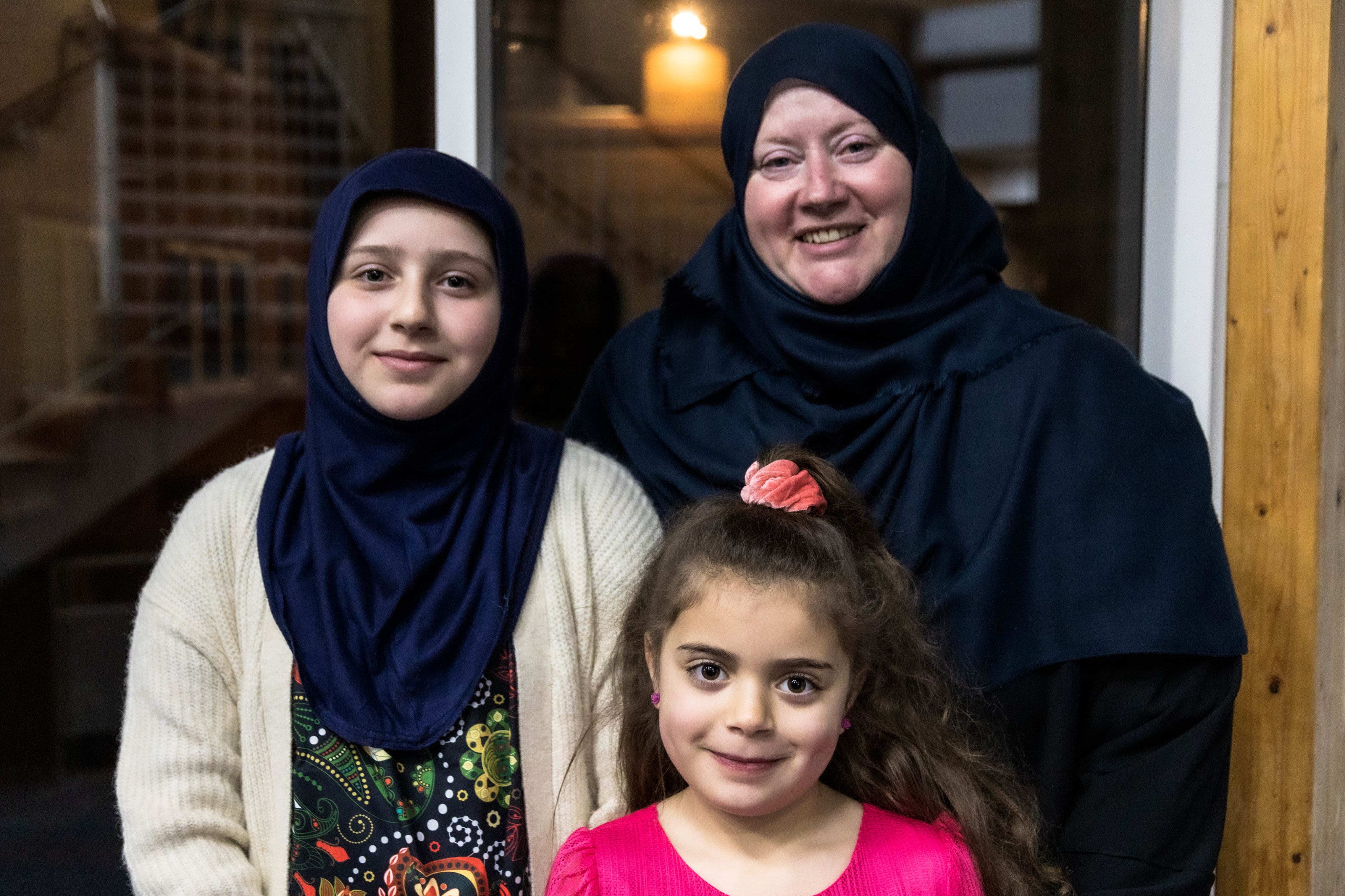
Sister Tama Merdaci was born a Catholic. But her search for faith saw her embracing Islam. Hijab, for her, is about respecting herself. It empowered her, she said, allowing her to stand tall in a society where hijab is not always understood. For Tama, hijab is a sign of faith and feminism. It is a symbol of modesty.
Sister Tama spoke of how her belief in Islam has been inherited by her younger daughters, Maryam, who is 10, and Khatijah, who is seven. Maryam began wearing hijab when she turned nine. Her mother, she said, is the most important person in her life, and seeing her wearing a hijab influenced Maryam to choose the same path.
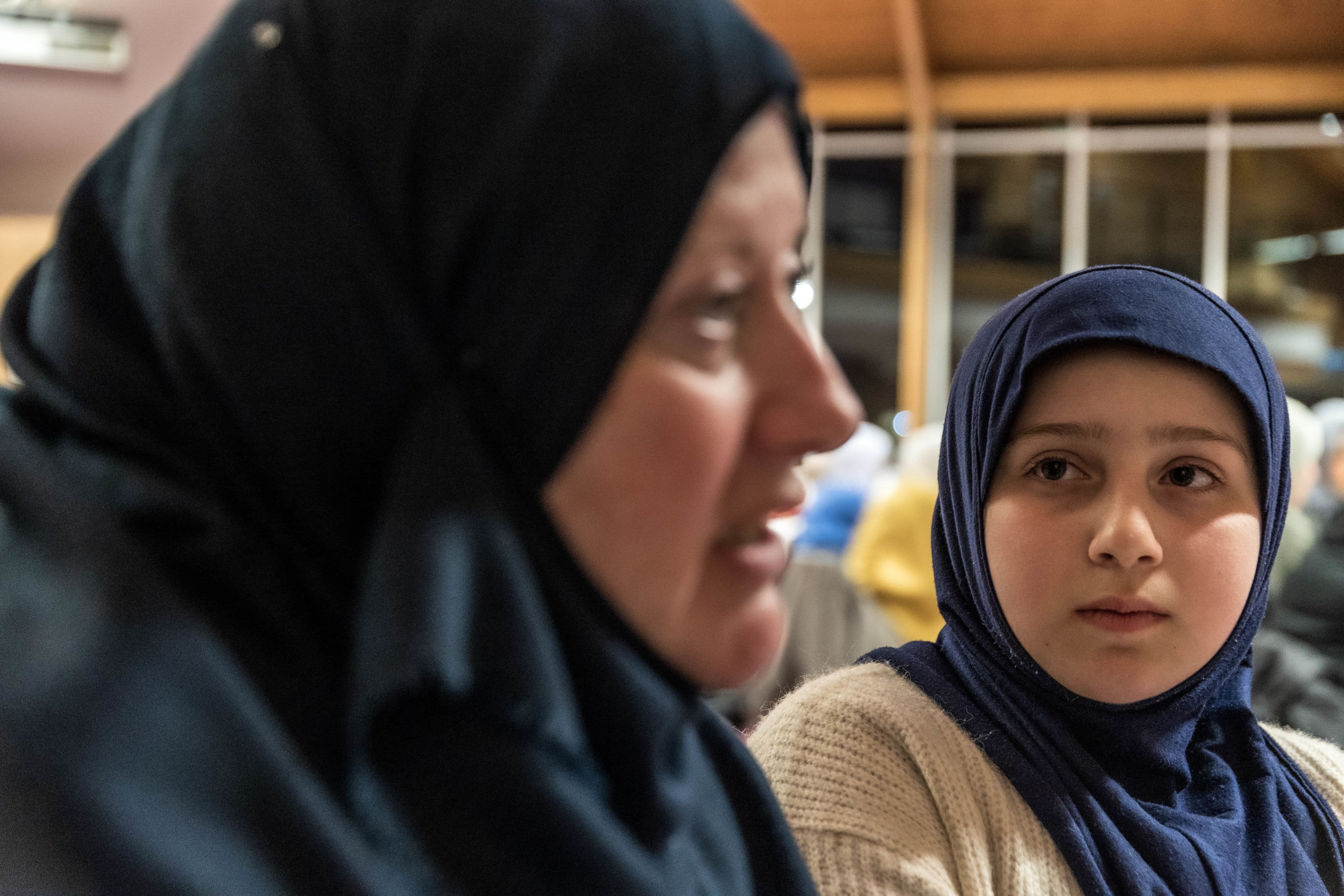
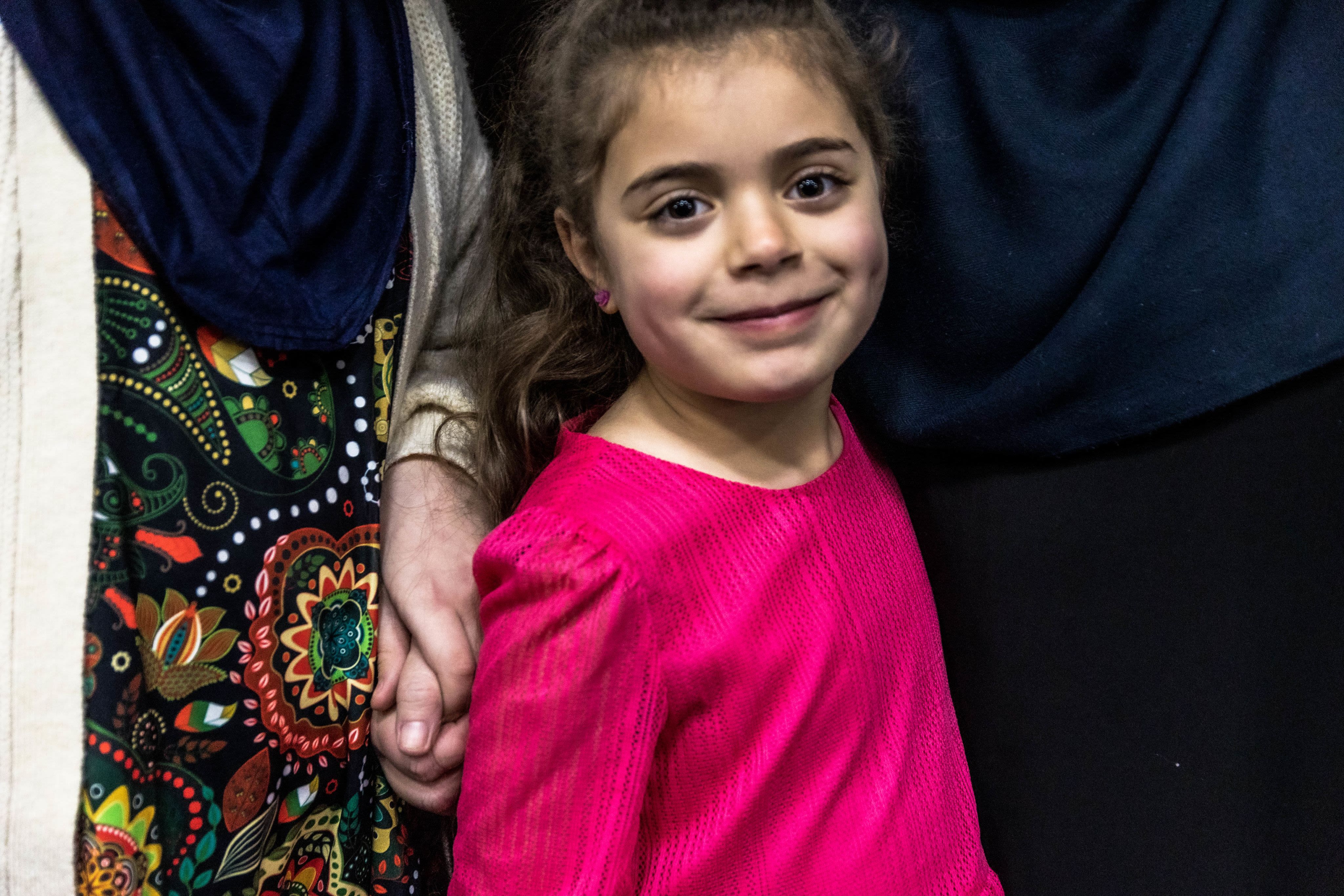
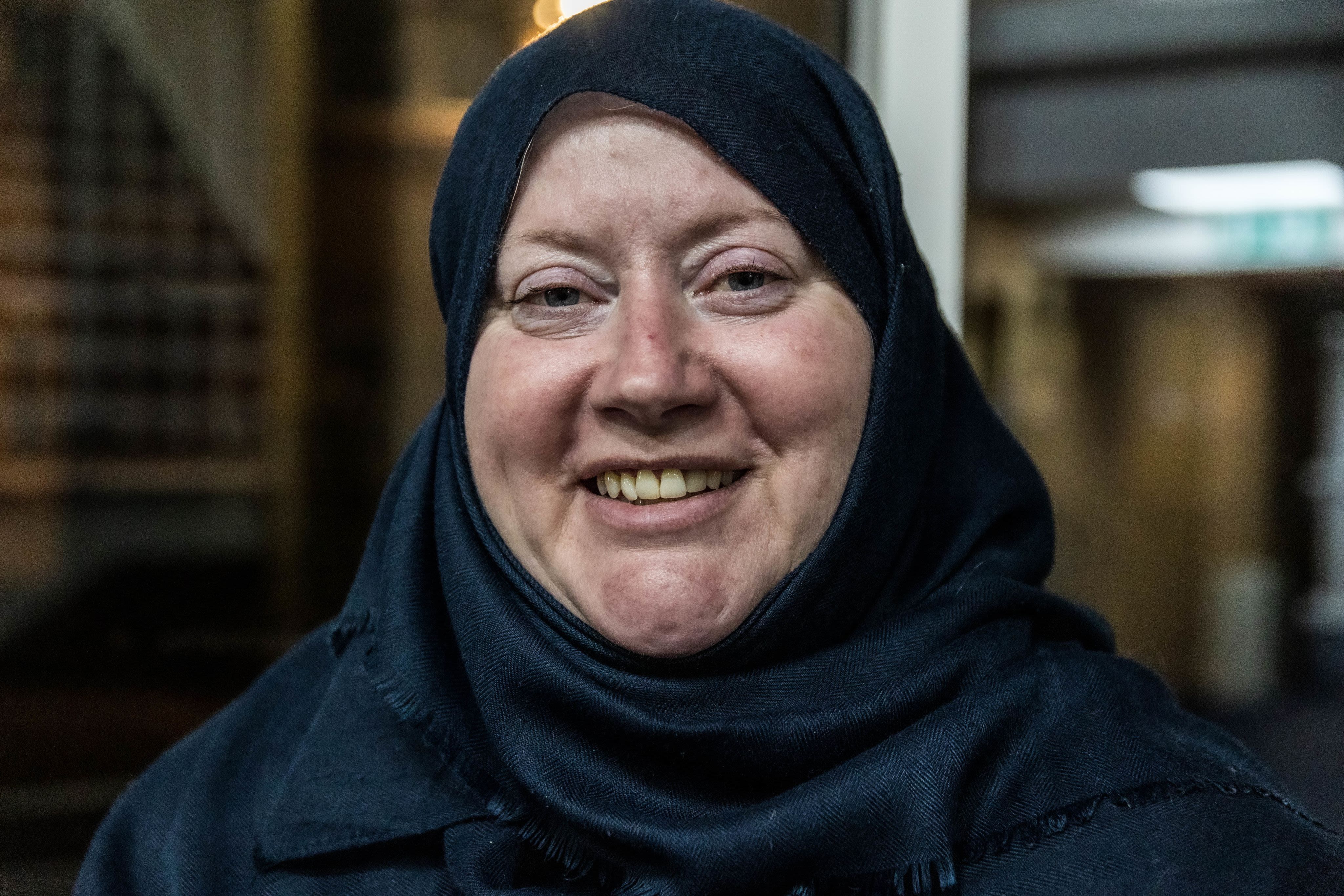
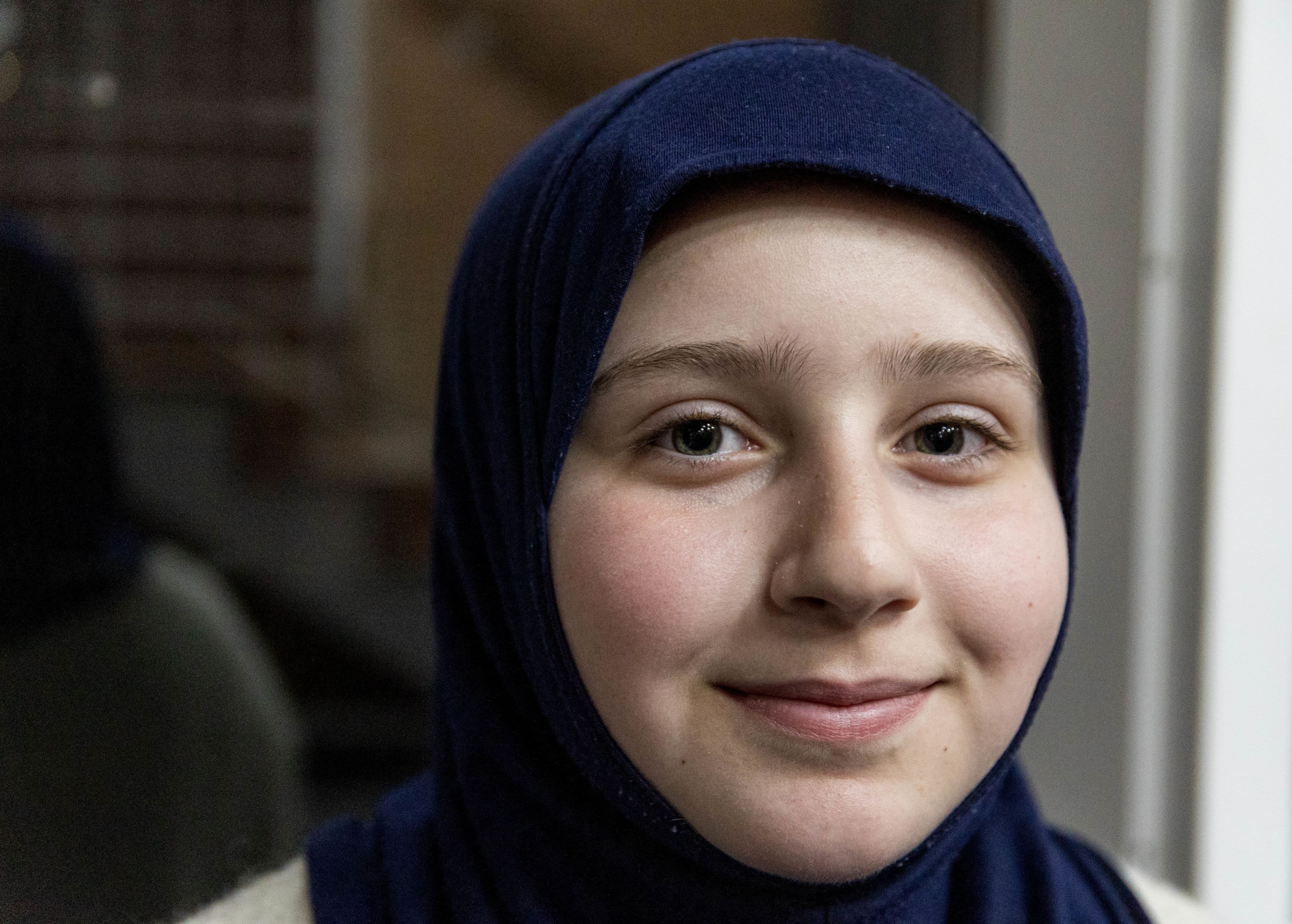




"I want to be the best example for my daughters, I have to be. I have shown them what Islam is, and they have made their choices by themselves.
"When I first started wearing the hijab, I would only do so in a select few locations. The road wasn't simple at first but it became easier with time.
"My family walked away from me when I converted to Islam. Thinking about how I was able to make this decision for myself makes me incredibly emotional. It was a choice that has brought me so much happiness."
"My hijab has given me a sense of security, comfort, and protection. It has given me the freedom to express my identity without conforming to the pressure of society's artificial beauty standards. It has strengthened me to raise voices against oppression, for basic human rights and against all atrocities and injustices.
"If this is not liberation, then what is?"
'Hijab is an act of worship for me'
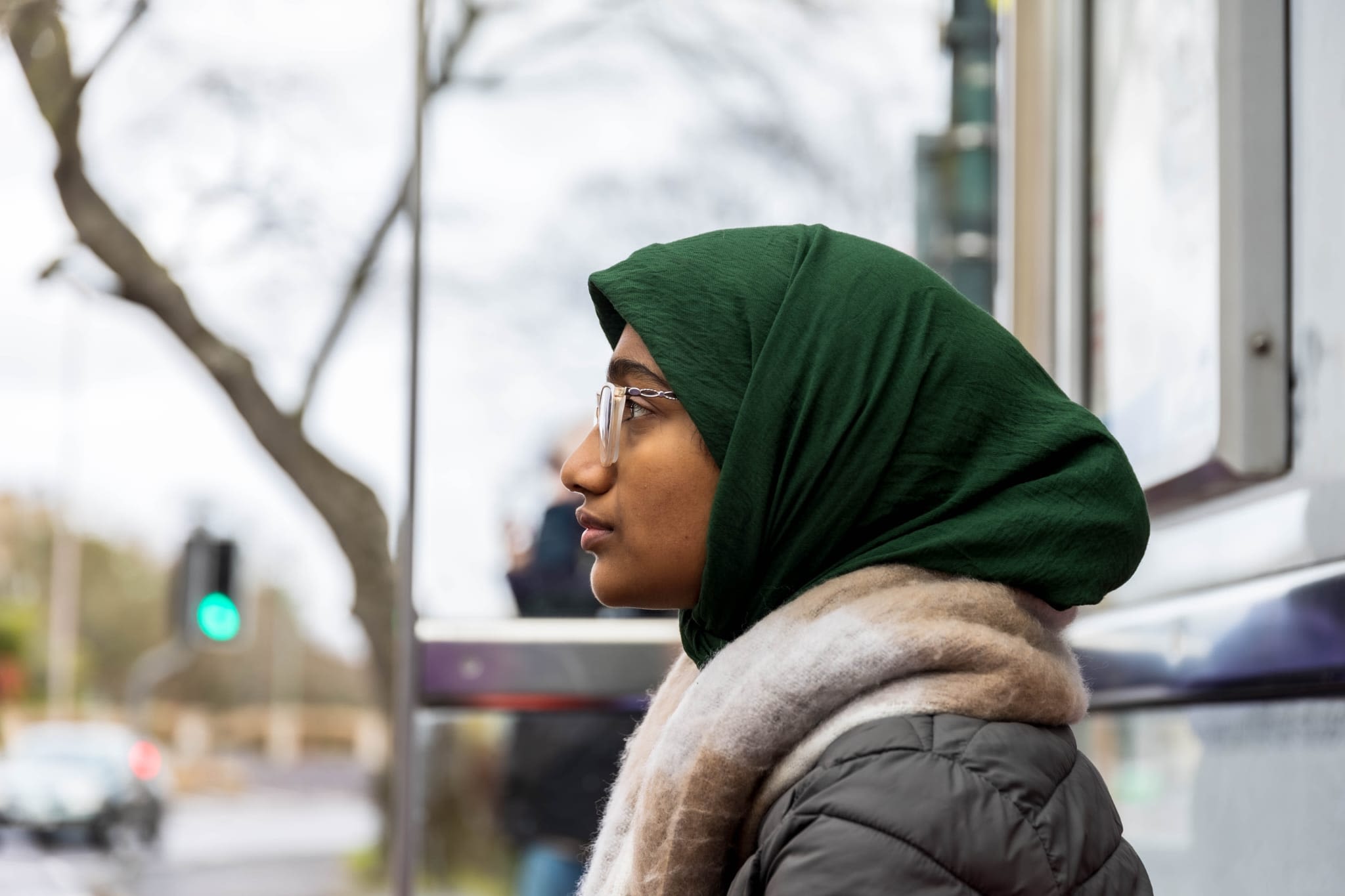
Fatima Farha, 24, is from India, born and raised in the UAE.
She is the Asian, Arab and Ethnic Minority Officer at a UK university, as well as the treasurer of its Islamic Society. Fatima contested and won the office of Vice President of the Welfare Community of the Student Union in her institution as the first hijabi woman to ever do so. As she waited anxiously for the election results, she shared her views of the hijab.
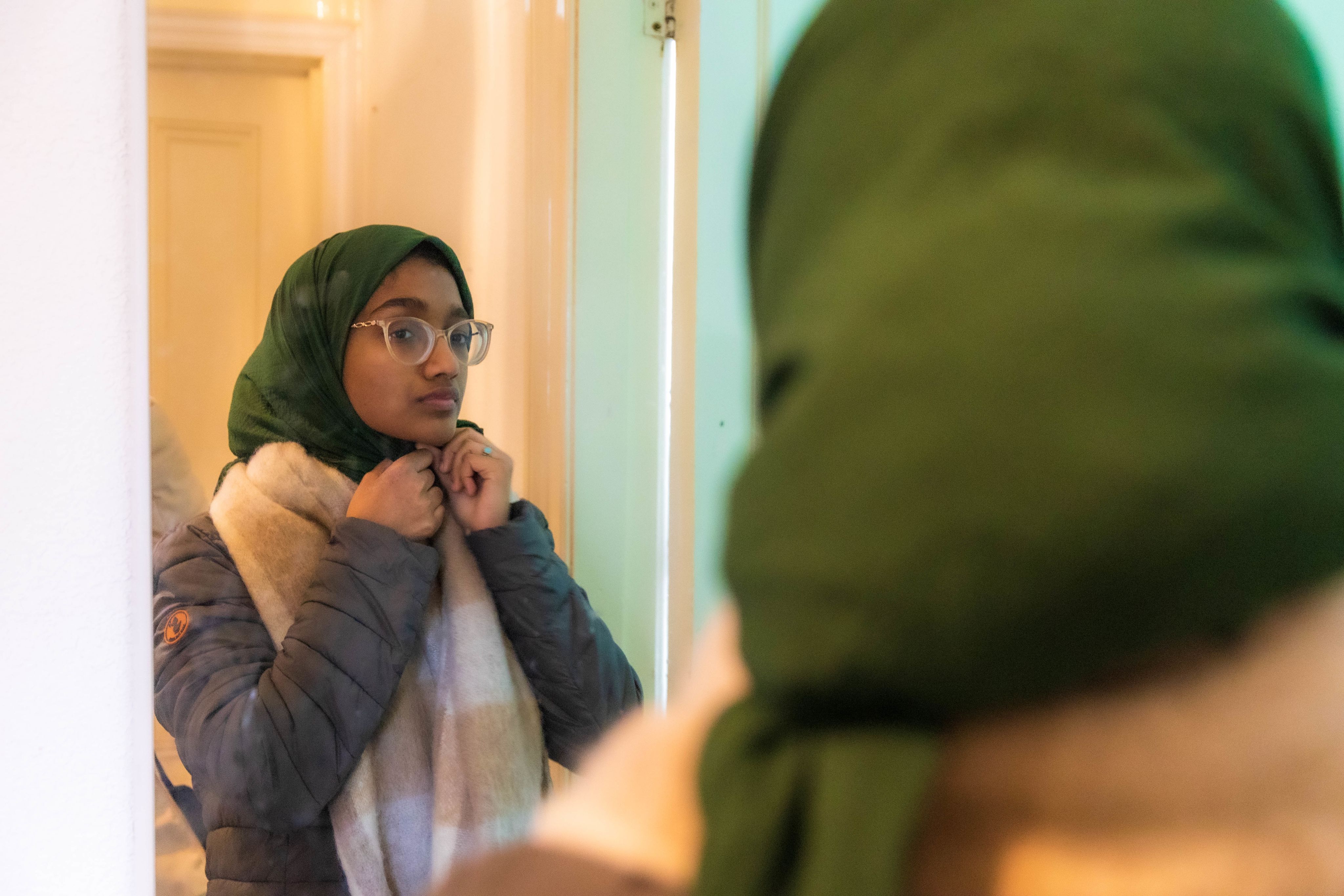
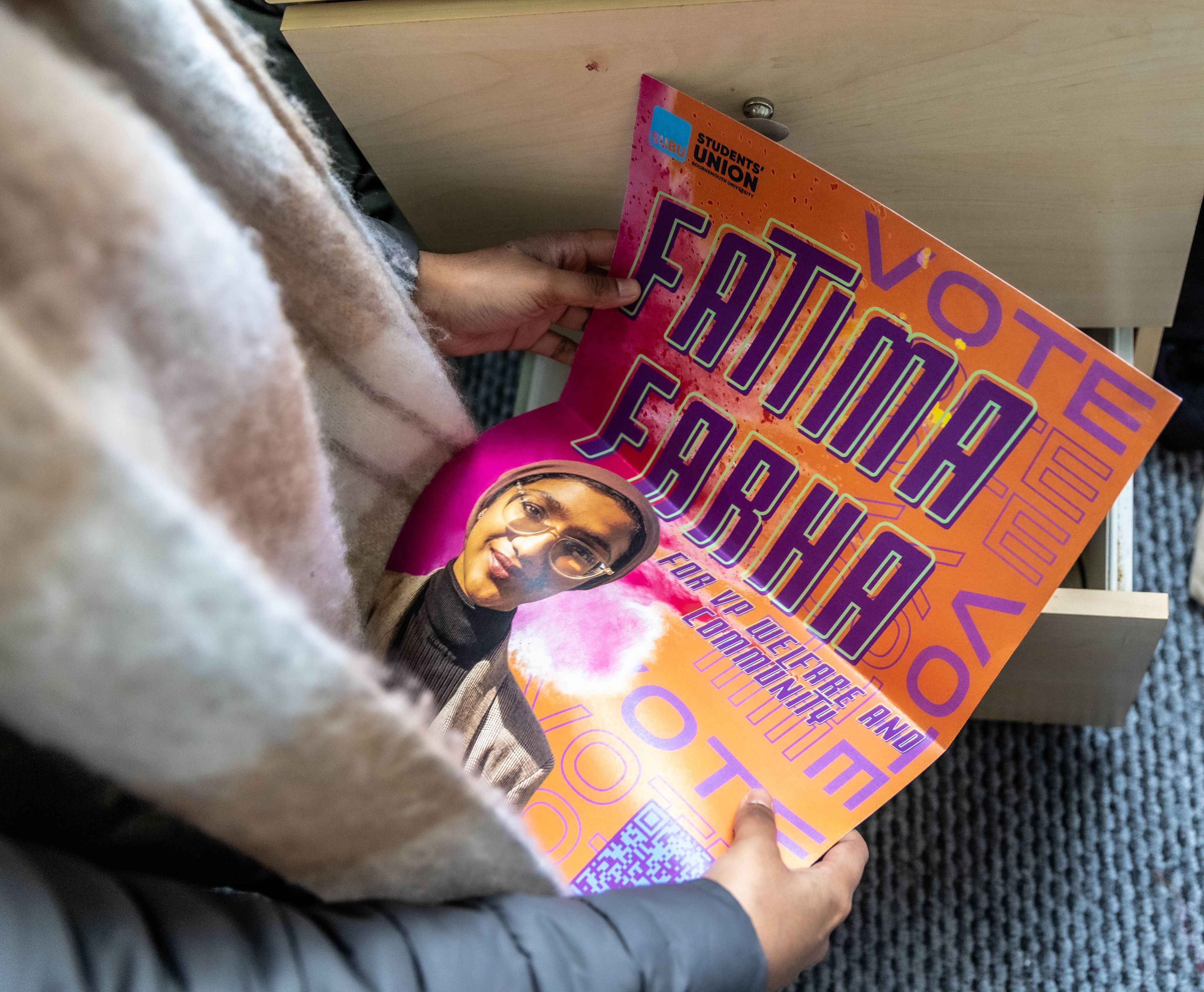
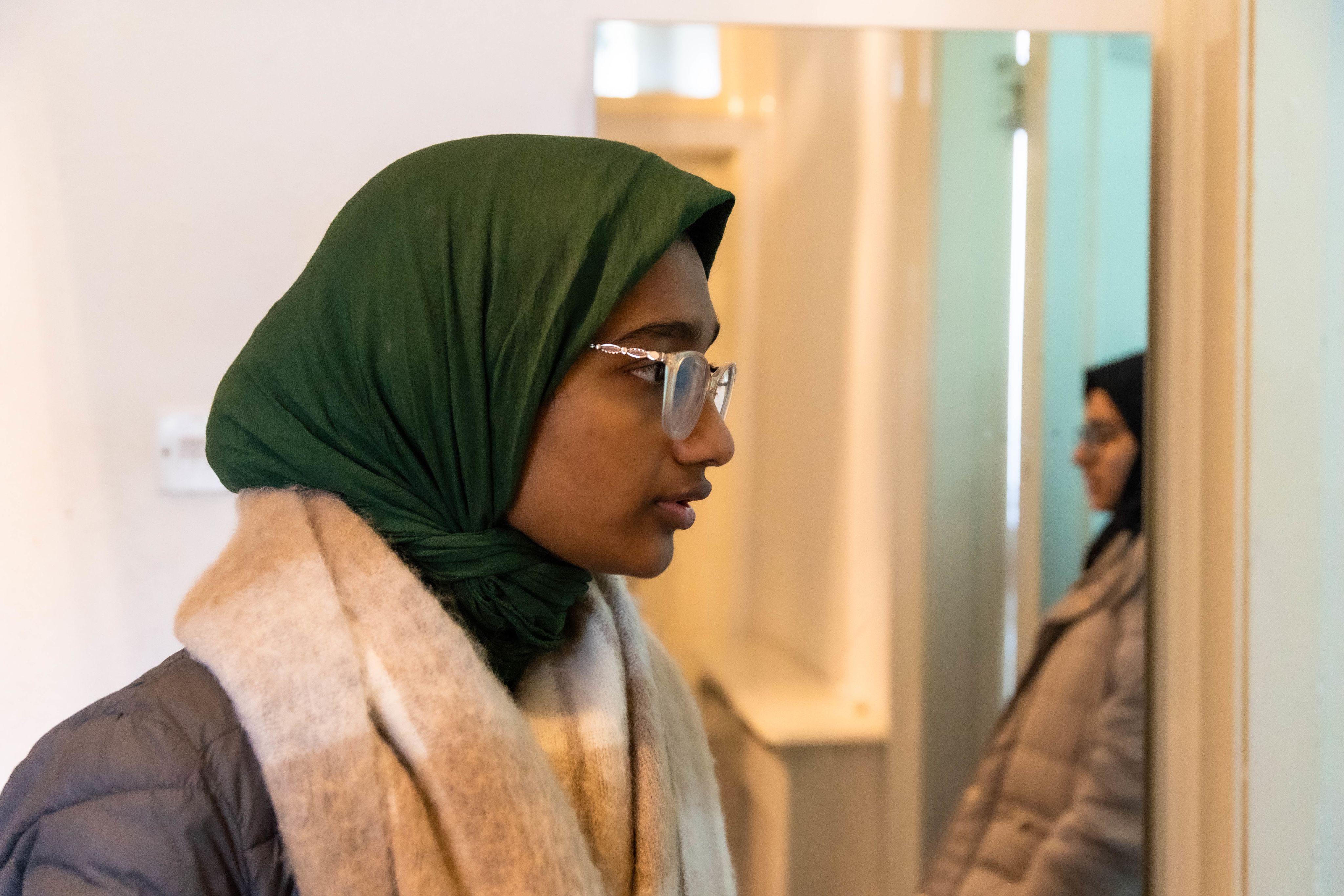



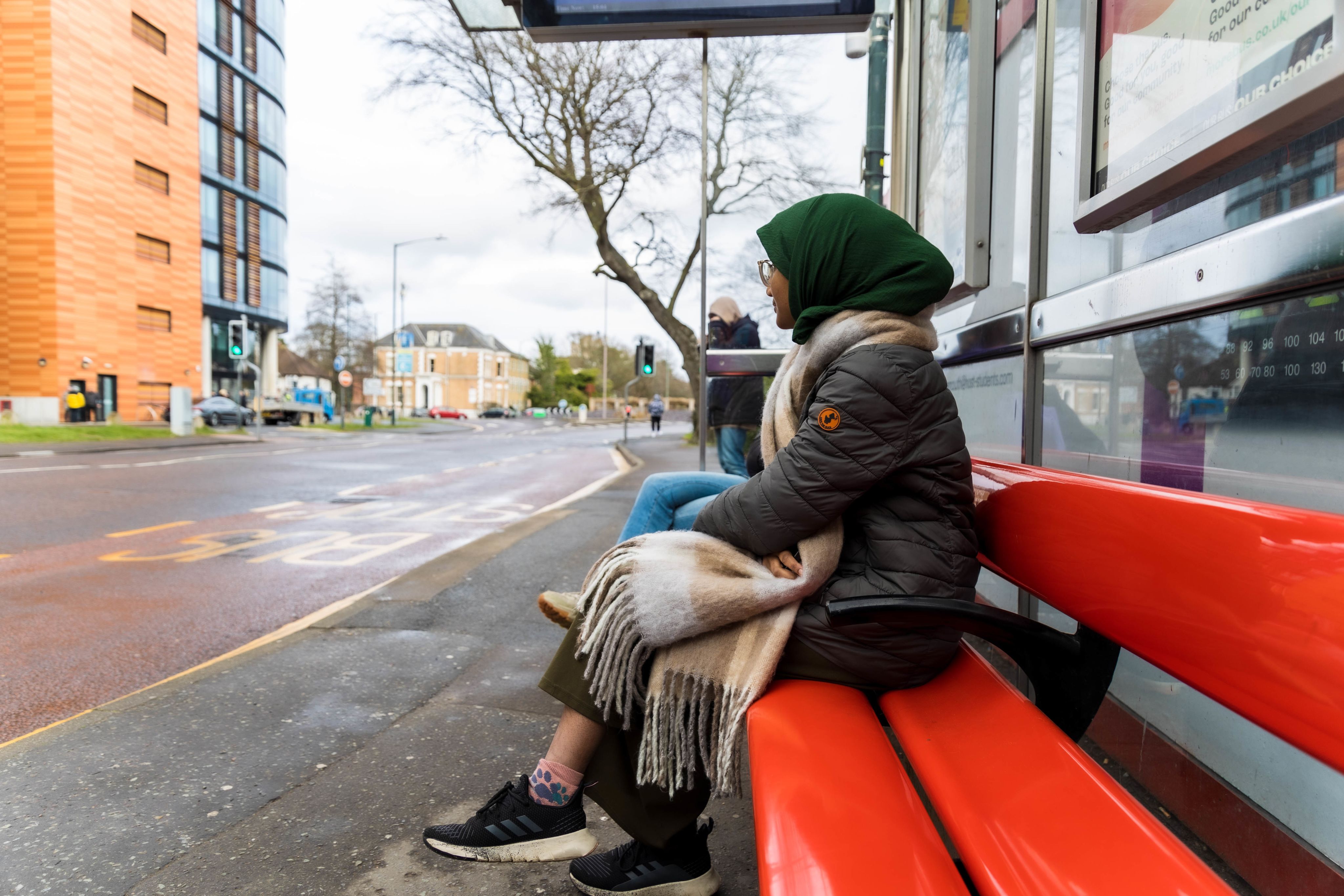
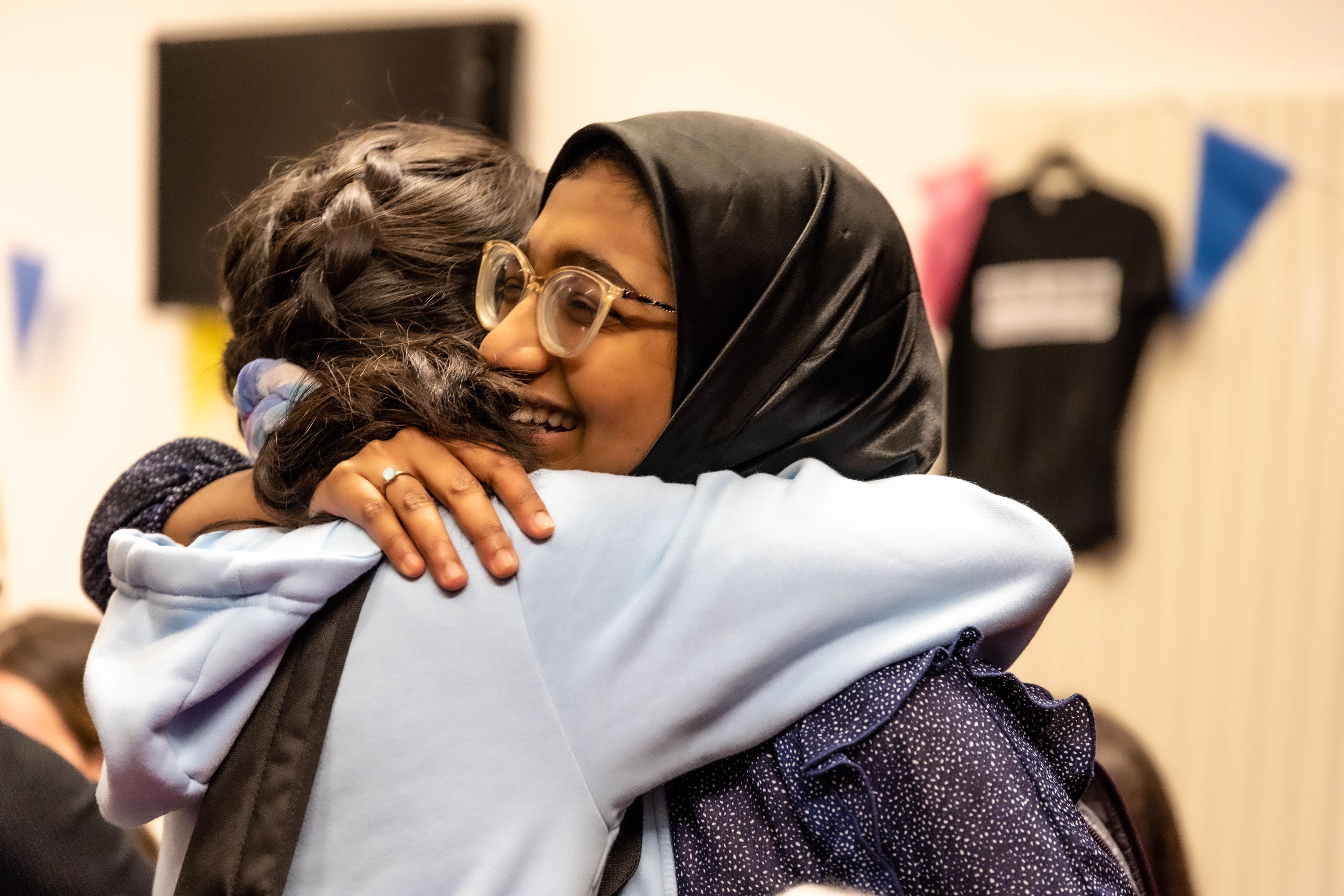


"Hijab is an act of worship for me. I have worn it since I was 10 years old. People recognise me with my scarf; it has become a part of my identity and is an expression of my faith.
"My attire does not restrict me. On the contrary, it liberates me."
"When I started running for the Student Union elections, I never thought I am running as a hijabi. I wanted to win the elections through my work. What can I bring to my society and do I have the qualities that fit the role?
"My attire does not restrict me. On the contrary, it liberates me."
'I wore a hijab on some random Tuesday for no reason. I never stopped wearing it since'
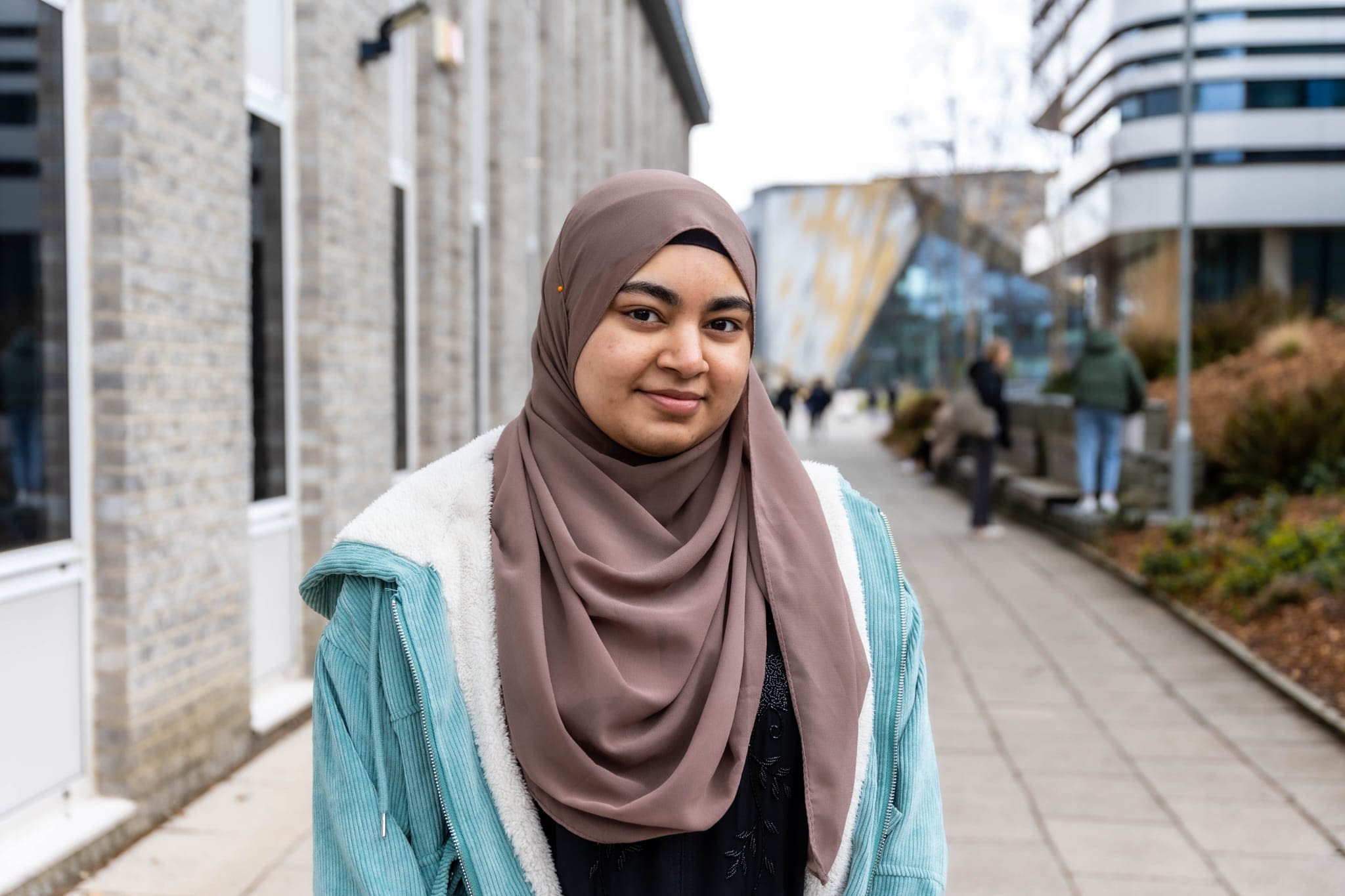
Mahi Ali, 22, is from Exeter, in south-west England.
She remembers her childhood, when she had felt out of place at school. Mahi said her struggle to fit into the non-Muslim society and find a sense of belongingness pre-occupied her entire adolescence.
"I was the only hijabi in my school during those years. It was strange for me to grow up around non-Muslims.
"The hijab is part of who I am."
"I just wore it on a random Tuesday for no reason and ever since I never stopped wearing it really.
"In the past, I didn't have any inspiration on how to wear a hijab, and when to wear it. I just waited for when I felt like it.
"As I became older, though, it became crucial to comprehend the principles and meaning behind the hijab. The more I learnt, the more I grew to love the hijab. I realised that it was more than just a covering for my head. It is about visually representing myself as a Muslim woman with my own voice and how I choose to dress. The hijab is now a part of who I am."
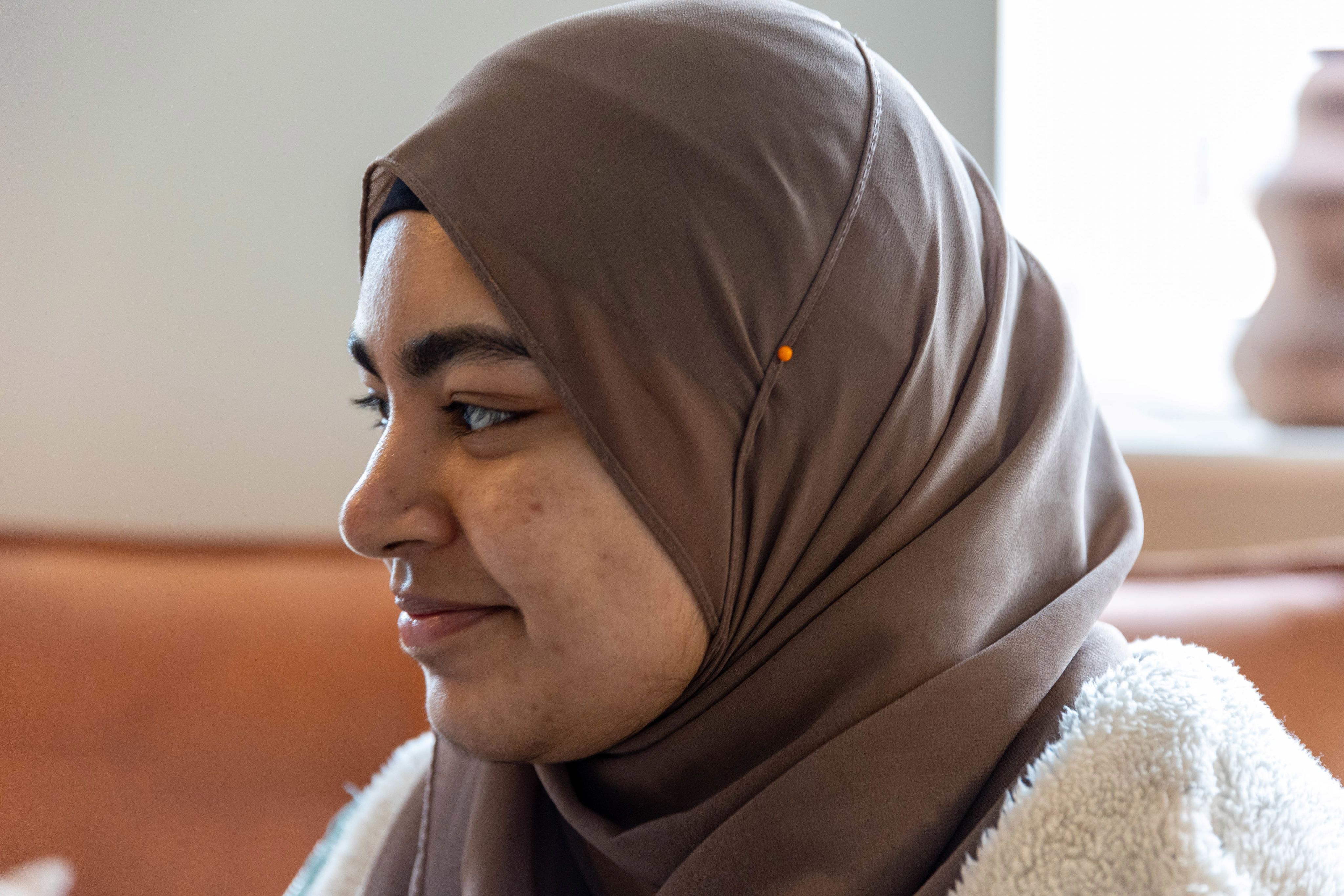
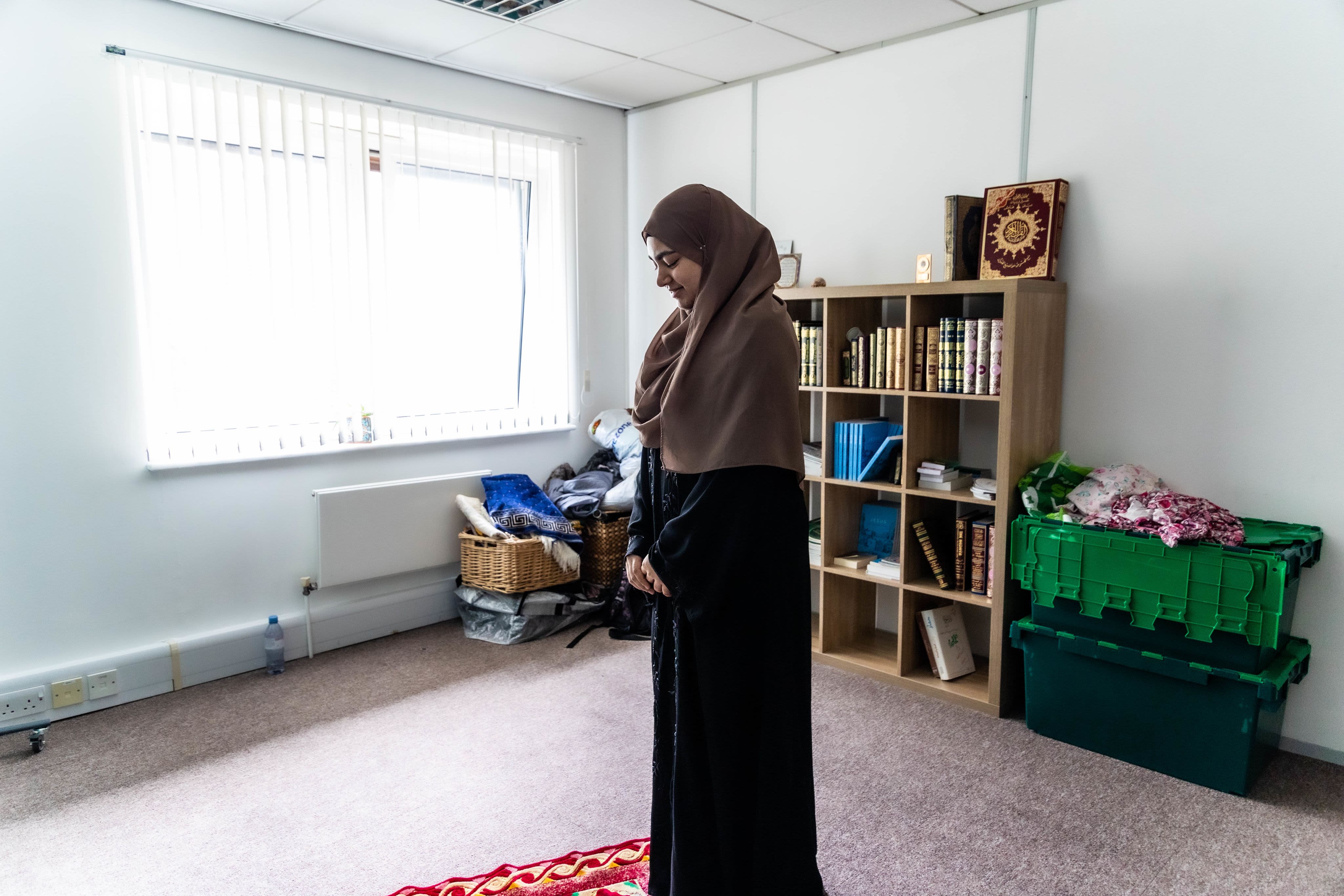
"My attire does not restrict me. On the contrary, it liberates me."
"It gives me the freedom to express my identity without conforming to the pressure of society's artificial beauty standards."
"The hijab is a way of life, the mentality you have, the way you treat others."
"If this is not liberation, then what is?"
About this photo essay
Simran
The idea of doing a story on the hijab came to us when we were casually talking. Libana told me how she began wearing it.
Libana
I mentioned how no one forced me into it. And how it was part of my identity now.
Simran
That set us thinking. How do other Muslim women feel about it? Do they have a different point of view?
Libana
Doing the story was difficult. It was not a subject that everyone was willing to talk about. There were people who were okay speaking about it, but were unwilling to be named or photographed.
Simran
So it was about establishing a relationship with them. We reached out to people we knew. We spoke to them first and took their interviews. And then persuaded them to do the photoshoot with us.
Libana
Yes. For instance, Cinta's photographs were taken two days after our interview.
Simran
We picked out the photographs that we wanted to use from the so many we had got. Which was not always easy.
Libana
Then we storyboarded. We tried to capture the perspective of our interviewees as simply as possible. We hope it has all come together well!